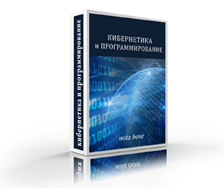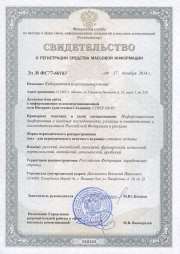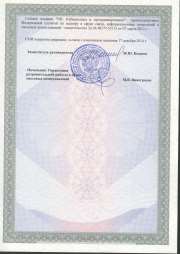MAIN PAGE
> Journal "Cybernetics and programming"
> Contents of Issue є 01/2018
Contents of Issue є 01/2018
|
Automated systems of engineering process administration |
|
Demichev M.S., Gaipov K.E., Korolev E.M., Demicheva A.A., Narozhnyi A.I. - Formation of the radio network topology with placement of mobile radio stations while minimizing the radiation power of radio signals
|
|
pp. 1-14
|
DOI: 10.25136/2644-5522.2018.1.24983
Abstract: The subject of the study is the formation of a radio network topology with placement of mobile radio stations, in which the total radiated signal power for radio stations will be minimized. The radiation power of signals for all radio stations and the coordinates for mobile radios are determined in the article, it is also assumed that the transmitting antennas of all radio stations have a circular pattern. To solve this problem, a mathematical model is constructed that has a number of assumptions that imply ideal conditions for the propagation of radio waves, as well as the location of radio stations in a Cartesian coordinate system. The development of the algorithm was carried out by an experimental-theoretical method, based on known facts of radio transmission and a mathematical solution of the Steiner problem for four and five vertices. The novelty of the study is the developed algorithm for determining the coordinates of mobile radio stations, as well as the radiation power of signals for stationary and mobile radios with a circular pattern of directionality. The result of the algorithm works is to determine the topology of the network and the range of operation of each radio station, which consumes the lowest radiation power of the transmitting antennas of radio stations.

|
Computer graphics, image processing and pattern recognition |
|
Belikova M.Y., Karanina S.Y., Glebova A.V. - Experimental comparison of clustering algorithms in the problem of lightning data grouping
|
|
pp. 15-26
|
DOI: 10.25136/2644-5522.2018.1.25261
Abstract: The authors present the results of an experimental comparison of the cluster analysis of thunderstorm data using the algorithms of k-means, dbscan and hierarchical agglomerative algorithms, where closest neighbor, full and medium coupling methods and the Ward method are used to calculate the intercluster distance. The influence of the normalization parameters on the number of clusters determined by the algorithms under consideration on the test sample is estimated. Data on the time of registration and the coordinates of lightning discharges recorded by the World Wide Lightning Location Network (WWLLN) were used for test purposes. The construction of grouping solutions by the chosen clustering algorithms was carried out with the help of the Nbclust, dbscan, and fpc cluster analysis packages developed in the R language. The article showns that the choice of the values of the normalization parameters has a significant effect on the number of clusters allocated from the sample under consideration using hierarchical clustering algorithms (especially for method of the nearest neighbor). The choice of the normalizing parameters has practically no effect or has a negligible effect on the results of lightning cluster clustering using the k-means and dbscan algorithms. The best agreement with expert judgment was obtained for the dbscan algorithm with normalizing parameters corresponding to linear dimensions of a thunderstorm convective cell of 100 km and a period of time of 30 minutes to an hour.

|
Smirnov M.V. - Methodology for the formation of programs to improve international police cooperation
|
|
pp. 27-35
|
DOI: 10.25136/2644-5522.2018.1.25072
Abstract: The subject of the study is the system of international police cooperation. The author focuses on the methods of comprehensive assessment of the activities of law enforcement agencies and methods of forming programs of activities that improve the activities of law enforcement agencies in the system of international police cooperation. The article gives information on various projects of the International Criminal Police Organization - Interpol, examines the assessment of the activities of law enforcement agencies and suggests a mechanism for estimating on the basis of matrix convolution indicators. The author sets forth the methodology for the formation of an optimal program of projects by the example of organizing the participation of a law enforcement agency in six projects in two areas of international police cooperation. To develop a mechanism for comprehensive assessment of the activities of law enforcement agencies, the author used the method of integrated assessment of development programs, applied in the science of management of socio-economic systems. To create an optimal program of projects, the author used the method of dichotomous programming. The main conclusion of the research is that the methodology for the formation of an optimal program of measures allows to increase the level of international police cooperation. A special contribution of the author is a critical approach to the existing system of assessing the activities of law enforcement agencies and the development of a mechanism for integrated assessment of the aggregate directions of international police cooperation based on the matrix convolution of indicators.

|
Systems analysis , search, analysis and information filtering |
|
Korobeinikov A.G., Sidorkina I.G. - Primary processing of seismic event data using wavelets in MATLAB
|
|
pp. 36-47
|
DOI: 10.25136/2644-5522.2018.1.25245
Abstract: The subject of the research in this article are methods of processing seismic events implemented in the MATLAB system. The primary wavelet analysis of seismic event data allows non-professional users (not seismologists) to determine the time of the earthquake starting from the values of the wavelet expansion coefficients. In addition, it is possible to estimate the power of the seismic event (magnitude). Examples of specific seismic events are given, the digital data of which were taken from the site http://ds.iris.edu. The results of the calculations are presented graphically. In the MATLAB system, there are a lot of methods for digital data processing and problem solving in different subject areas. To work with non-stationary signals, you often use the Wavelet Toolbox extension package, which is a powerful tool. The MATLAB system, and therefore the Wavelet Toolbox, is constantly evolving. A distinctive feature of the new versions of Wavelet Toolbox is the appearance of new versions and the modification of existing functions. In the article the results of data processing of different seismic events obtained using the modified function cwt (Introduced in R2016b) are considered. The methods considered in the article can be used, for example, in the educational process. And to achieve several goals - training in the system MATLAB, the application of digital data processing methods, the use of wavelet analysis in solving data processing problems, the study of earthquake science. In addition, teaching skills to correctly interpret the findings can bring great benefits to learners in the future.

|
Automated systems of engineering process administration |
|
Lavrent'ev B.F. - Multi-program medical device for light exposure to the human visual analyzer
|
|
pp. 48-54
|
DOI: 10.25136/2644-5522.2018.1.19519
Abstract: The subject of research is the creation of a simple multi-program multifunctional device for scientific medical centers with the aim of conducting clinical trials in the treatment of various human diseases using elements of light exposure to the human visual analyzer. The author focuses on information search by topic, design of the device in accordance with the technical task, development of technical documentation, manufacture and configuration of the prototype device and transfering it to the medical center for clinical studies. In addition, the most important task of the project is to develop software for the device and to coordinate it with medical specialists.The device has wide functional possibilities of influencing the human body through vision with light signals of different color, frequency modulation, brightness, shape, speed of movement with the possibility of operative change of their parameters during one session.Electroretinography is a method for studying the function of the retina of the eye by recording the oscillations of the biopotential arising in it under light stimulation. In humans, these fluctuations are recorded with the help of a special contact lens in which electrodes are mounted. Electroretinography is used both for research purposes and in clinical practice. Cataract, glaucoma, vascular disorders are diagnosed., Diseases of various human organs. The functional possibilities of the proposed device are increasing, as it becomes possible, in addition to more effective influence on the visual analyzer of a person, the introduction of chromotarapy elements and psycho-emotional effects on a person, for example, stress relief, improvement quality of sleep, increase of creative possibilities, more effective training with the use of audio equipment. The effectiveness of the use of light influence on this or that human organ for the purpose of its treatment is determined by the fact that electromagnetic radiation of the visible optical range is an integral component of the human environment. Numerous studies have shown that light radiation of different spectrum regulates carbohydrate, protein, fat, water-salt and mineral metabolism, cellular metabolism, complex adaptive processes.Information search showed that similar devices with such functionality do not exist.

|
Data encryption and data protection |
|
Dikii D.I., Grishentsev A.Y., Savchenko-Novopavlovskaya S.L., Nechaeva N.V., Eliseeva V.V., Artemeva V.D. - Development of neural network module for user authentication based on handwriting dynamics
|
|
pp. 55-63
|
DOI: 10.25136/2644-5522.2018.1.19801
Abstract: The article is devoted to the development and investigation of the structure of the neural network module, which is part of the authentication system for users of various information systems analyzing the parameters of handwriting dynamics. The algorithm for learning the neural network module is also considered. The main task that the neural network module should solve is the implementation of a binary classifier based on input characteristic vectors such as the Cartesian coordinates of the handwriting pattern along the abscissa and ordinate axes, as well as time cuts that allow describing the writing speed of the sample. For the structures of the neural network module considered in the experiment, an experiment was performed in which different volumes of handwriting samples were fed to the input in order to determine the most stable. A mathematical model of a neural network module and a genetic algorithm for its learning are described. The article also provides an overview of the structures of neural network modules that are used in other user authentication software for the dynamics of handwriting. The substantiation of the choice of the module structure based on the results of the experiment is presented. The software implementation of the neural network module is implemented in the Java programming language.

|
Bashmakov D.A., Prokhozhev N.N., Mikhailichenko O.V., Sivachev A.V. - Application of neighborhood matrices of pixels to improve the accuracy of steganoanalysis of fixed digital images with a homogeneous background
|
|
pp. 64-72
|
DOI: 10.25136/2644-5522.2018.1.24919
Abstract: The article consideres the accuracy of the steganoanalysis using the Weighted Stego algorithm in passive data transmission channel countermeasures using the method of embedding the spatial region of fixed digital images with the RGB color model into the smallest significant bit. The dependence of the accuracy of steganoanalysis by the Weighted Stego method on the fraction of a homogeneous background in the analyzed image was studied. The drop in the accuracy of pixel prediction in the background areas of the image is investigated using the prediction model proposed by the authors of the original Weighted Stego algorithm. The Weighted Stego steganoanalysis algorithm is investigated. The basis for the steganoanalysis algorithm is a model for predicting the pixel values of the analyzed image from adjacent pixels. To assess the effectiveness of the analysis, the BOWS2 collection was used. Embedding information is realized by changing the least significant bits of the image in the spatial domain with a payload of 3-5 %%. The effectiveness of the methods is determined taking into account the obtained truly positive, truly negative, false positive and false negative values of the classification of images. The fall in the accuracy of steganoanalysis by the Weighted Stego method is shown with an increase in the fraction of a homogeneous background in the analyzed image. The method of improvement of the pixel prediction model in the basis of Weighted Stego is proposed, which allows to level out the drop in accuracy with increasing the fraction of a homogeneous background in the analyzed image. The results of the work are useful to a specialist in the field of information protection in the tasks of detecting and countering a hidden data channel. The obtained results can be used in the development of steganoanalysis systems based on the Weighted Stego algorithm.

|






